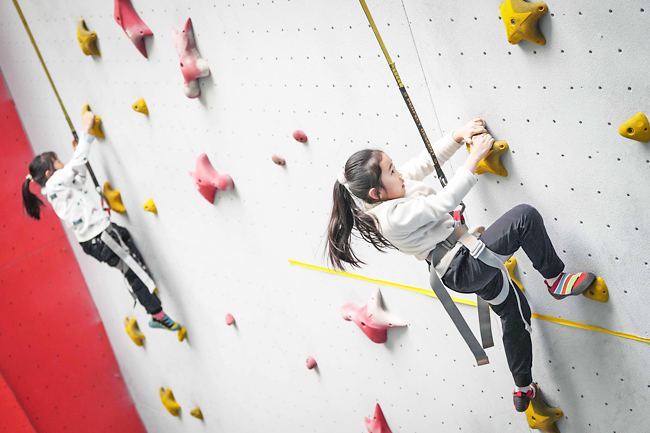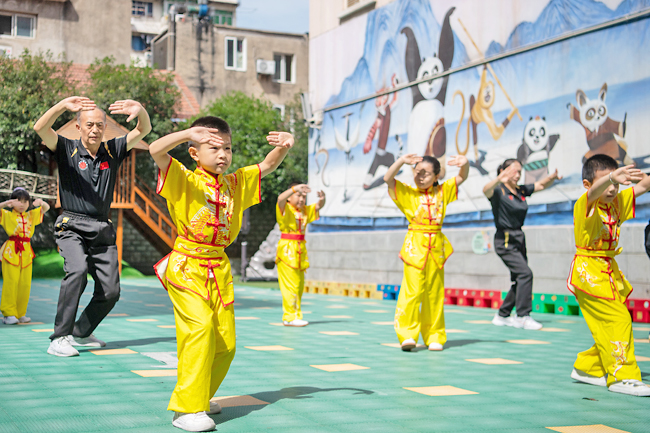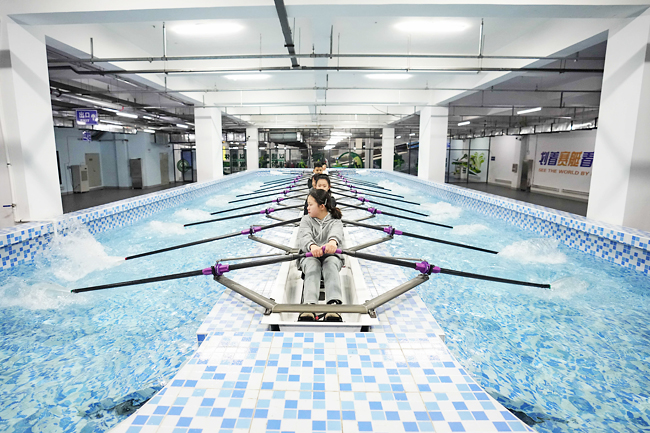BEIJING (XINHUA) – Defying the stereotype of Chinese schools with their heavy workloads and extreme focus on high scores, a primary school in northeast China has been transformed into a “playground”, where students spend one-third of their time on exercise.
Students at No 9 Primary School in the Hunnan District of Shenyang, a city in northeast China, have access to around 20 sports ranging from rock climbing and rowing to unicycling. Additionally, they can enjoy a playground equipped with three giant 16-metre slides and a “mountain” constructed from 1,400 tyres.
“Every activity is carefully selected. Rock climbing strengthens upper body muscles and aids the recovery of abnormal spinal curvature,” said headmaster Hou Mingfei.
“Rowing fosters a competitive spirit and teamwork, while unicycling helps students coordinate their body, cognition and emotions.”
“Play is the most direct way for children to be happy,” Hou said, adding that over 90 per cent of the school’s 2,500 students can ride a unicycle.
The emphasis on sports has yielded significant health benefits. The school’s obesity rate is under three per cent, and the myopia rate is only 13.88 per cent, well below the national average.



MORE WEIGHT ON SPORTS
Hou’s school is part of a growing trend in China, where educational institutions increasingly recognise the importance of sports and fitness. This shift aims to tackle health issues among students, such as myopia, obesity and spinal curvature.
In 2022, more than half of Chinese children and adolescents were short-sighted, while by 2020, nearly one in five between the ages of six and 17 was overweight or obese, official data shows. Furthermore, 2.8 per cent of primary and middle school students were found to have abnormal spinal curvatures in 2019.
The country has launched various initiatives to promote all-round youth development, including placing greater emphasis on sports in high school entrance exams and implementing the “double reduction” policy to reduce the burden of homework and after-school tutoring.
Hou’s school in Shenyang is not alone in promoting sports. Primary and middle schools in Beijing have innovatively introduced a variety of activities, such as lion dancing and fencing, during breaks.
In Changping District alone, 90 per cent of schools have football teams. On average, the district hosts more than 4,700 matches annually at the district and school levels.
These efforts have paid off. The myopia rate among Beijing’s primary and middle school students decreased by one per cent in 2023 compared to 2022, according to data from the Beijing Municipal Education Commission.
Contrary to the belief that more time spent in playgrounds negatively impacts academic performance, most children have actually performed better in exams after playing more sports, said Hou in Shenyang.
Hou’s innovative approach has received praise from president of the Chinese Basketball Association Yao Ming. “He has built an amazing school that allows children to have fun in sports and unlock the infinite possibilities of life,” Yao said.
TRADITIONAL ACTIVITIES
As China builds itself into a strong sporting nation, a growing number of schools are promoting sports, both modern and traditional.
Among the beneficiaries is seven-year-old Shao Qixuan, who started learning Azure Dragon Fist, a style of martial arts, over a year ago when she was in kindergarten.
Now in primary school in Wuhan, central China’s Hubei Province, Shao continues to practise every weekend with friends, come rain or shine.
Over the past year, her mother Ling Feifei has witnessed Shao growing stronger. “She has never asked for sick leave,” Ling said.
“Martial arts are part of traditional Chinese culture,” Ling said, emphasising that schools should provide more sports activities to boost children’s physical fitness.




